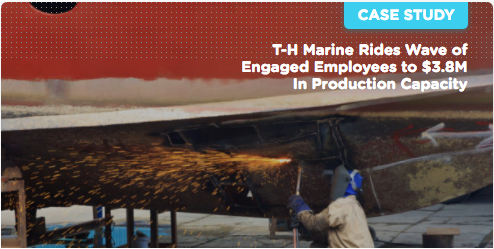Emplify takes the guessing out of employee engagement
As the celebrated management thinker Peter Drucker says, “You manage what you measure.” Drucker means that you can’t know whether or not you are successful unless success is defined and tracked.
Imagine a CEO explaining to her stakeholders that tracking sales or customer satisfaction is kind of hard and messy, so she’s just going to wait and see what happens after 12 months. She probably wouldn’t be CEO for long, would she?
It sounds outrageous not to measure our progress towards goals as important as sales or customer satisfaction. However, far too many CEOs are allowing their most important business indicator to go unmeasured, and it’s something that they themselves have ranked as the number one driver of business success — employee engagement.
For example, Deloitte’s 2017 Global Human Capital Trends report found that 85 percent of U.S. executives rated the “employee experience” important or very important, but very few (59%) think they do a good job of building that experience.

Santiago JaramilloFounder & CEO
Emplify, a Fishers, Ind.-based tech company focused on employee engagement, provides employers with a mobile-first platform that distills qualitative and quantitative feedback into employee analytics that enable leaders to make better business decisions. The Insights™ framework leverages quarterly surveys grounded in 14 proven, scientific measurements and 3 psychological conditions of employee engagement, as well as SmartPulse™ polling, to gather meaningful employee data. The results are presented in the form of one quarterly score that companies can use to benchmark their employee engagement, along with results organized by different segments, like department, manager, or location.
The goal, explains Jaramillo, is to reach a critical mass with business leaders where the Emplify score is considered equal to the emphasis placed on sales reports and customer satisfaction indicators like CSAT, Net Promoter Score (NPS) or Customer Effort Score (CES).
“But it’s more than just a score. We’ve identified 14 drivers of engagement and three psychological conditions that underpin the things that companies can focus on to quantitatively improve their employee engagement in a way they can see numerically and that they can trust is real,” Jaramillo said. “Just adding a ping pong table or a beer keg and letting millennials wear jeans on Fridays are just random guesses at what will improve engagement. Many times these things entirely miss the mark when it comes to getting employees to actually care about the work they’re doing because it’s more meaningful to them than just the paycheck or trendy perks they receive.”
The Emplify score and insights allow leaders to begin to diagnose why there is a lack of engagement based on which driver or psychological condition is lacking from the workplace, and this is where it becomes actionable. Emplify’s mobile technology follows that quantitative element of the survey, even capturing employee ideas that offer leaders opportunities to solve for the problem.

Emplify is not only driving better engagement for its users, but leading to ROI by uncovering gaps in productivity and retention. T-H Marine, provider of high-quality boating accessories, conducted a company-wide Emplify engagement survey to surface and pinpoint deep insights about the culture of each team. When the company’s results revealed that the production team felt underutilized on a specific production process, TH Marine purchased more advanced equipment for their employees, speeding up the time to complete a certain task by 30%. By addressing a high-impact pain point uncovered by Emplify’s survey solution, TH Marine has been able to add $3.8 million in new product production capacity while reducing risk of injury, mitigating fatigue, and enhancing morale.
“The reality is we spend at least a third to half of our lives at work, and it’s sad to think that up to 70 percent of workers out there are disengaged with their work for much of that time,” said Jaramillo. “It’s also really costly for employers because it’s been proven that lower engagement means higher employee turnover and lower productivity and with the talent market being the most competitive in the past decade, the ‘people factor’ of an organization matters more than ever”
According to a study by Gallup and Bain, highly engaged employees are 87 percent less likely to leave their companies than their disengaged counterparts, “so employee engagement is this huge lever in terms of what it can offer a business in talent ROI,” Jaramillo said. “If a leader can materially and truly improve employee engagement they can cut their voluntary turnover rate in half and increase productivity by double digits.”
Browse More Emplify Content
Check out these other posts including this contributed piece about Employee Experience Hiring Tips by Emplify’s own Theresa Koch, director of talent acquisition & development, and our preview of Emplify Founder Santiago Jaramillo’s book on Agile Engagement.


